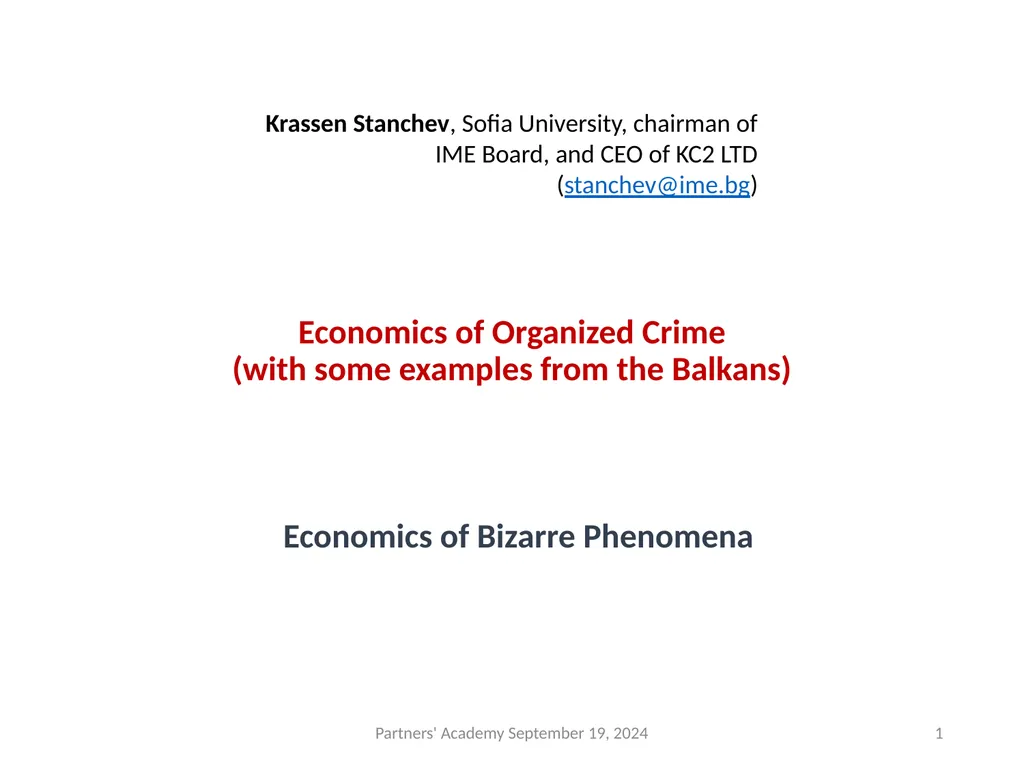
Author : pasty-toler | Published Date : 2025-08-16
Description: Economics of Organized Crime (with some examples from the Balkans) Economics of Bizarre Phenomena Krassen Stanchev, Sofia University, chairman of IME Board, and CEO of KC2 LTD (stanchevime.bg) Partners Academy September 19, 2024 1 WorkingDownload Presentation The PPT/PDF document "" is the property of its rightful owner. Permission is granted to download and print the materials on this website for personal, non-commercial use only, and to display it on your personal computer provided you do not modify the materials and that you retain all copyright notices contained in the materials. By downloading content from our website, you accept the terms of this agreement.
Here is the link to download the presentation.
"Economics of Organized Crime (with some examples"The content belongs to its owner. You may download and print it for personal use, without modification, and keep all copyright notices. By downloading, you agree to these terms.













